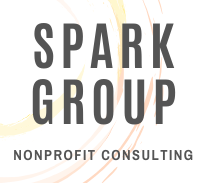How to Research Statistics for Grants
Evidence-Based Programs and Practices
Grant applications generally require statistical data to provide evidence of need or as justification for the grant ask. For example, a typical 'ask' in the narrative section of a grant application might look something like this:
"[Grantor Name] strongly emphasizes the use of data and evidence in policymaking and program development."
In other words, the grant reviewers expect to see lots of data, references, and evidence that justify how and why dollars should go to your project, program, or organization.
To produce good evidence, you must spend time researching and collecting data.
Grant writing professionals will tell you that usually the actual 'writing' of the grant is really only about 20% of the grant writing process.
Therefore the other 80% of the grant writing process -- the bulk of time spent dedicated to grant writing -- is time spent researching and finding the data necessary for creating a compelling, evidence-based narrative.
That data and evidence can come from a number of different sources.
Program Evaluations
First, specific program data should be supplied by the evidence-based program evaluation you've been collecting (which is why it's important to consider program evaluation and the metrics you will use to collect data at the start of any new program).
But outside of your program evaluation data, there is still data you can, and should, include to demonstrate that the program or oganization seeking grant funding fits the 'evidence-based' bill.
Data-driven Websites
A few good places to visit to find useful statistical data, demographic information, and predictive analytics include the following websites:
https://metrolabnetwork.org/ - an organization that connects universities, local governments, and civic partners who can provide and share research and data to inform evidence-based policies and enable data and technology transformation.
https://simplyanalytics.com/ - a web-based mapping, analytics, and data visualization application that allows users to create visually appealing, interactive maps, charts, and reports using its 100,000+ data variables
census.gov - find census results, reports, and demographic information by state, city, or even zip code.
Prior Grantees
Another potential source of data -- and one often overlooked -- is a past, successful grantee of the grant for which you are applying. Therefore another important element to research: who has successfully applied for and received your targeted grant in the past!
You can find past grant recipients with a quick search engine search, or you can contact the grantor to ask. Especially if you are applying for federal grant money -- prior recipients of federal grant money (grantees) must be provided as a matter of public record and are available on a federal grant database.
Once you've found the organization's name, another quick search can often lead to contact information. Reach out to someone at the organization, and they might even share their past grant application with you. It can't hurt to ask.
Parallel Programming
Finally, when looking for grant funding for an innovative, new program, and there is not yet enough usable data on the specific type of program you are trying to fund, think broadly and be creative. While it's great to have specific program data to use, sometimes that data just doesn't exist. In that case, think about what similar or parallel programs can provide a justifiable basis for comparison.
For example, we are currently working with an organization looking to provide a center-based model to offer multiple services for survivors of sexual assault -- all in one physical location. Unfortunately, because the particular program-model the organization plans to follow is so innovative and new, there's not a lot of usable data on similar models in existence. There is, however, data around a similar, community-center based model used to address poverty. But should I, as a grant-writer, choose to point to this other type of data, part of my task must be to concisely justify and explain how and why that data is applicable.
Another strategy I can use in this instance is to point to compelling, data-driven evidence of the obstacles survivors of sexual assault face currently, without the center-based model yet in existence. Then I would create a narrative around how the new model will address these obstacles in ways current practices may be falling short.
80-20 is the key
Remember that the grant 'writing' process is really only about 20% of the time a 'writing' task. Protect that other 80% of your time -- others may not understand that if you aren't actually 'writing,' you are still doing some hefty lifting. In fact, you are doing the bulk of the grant-writing work through your diligent research.
Professional help is only a click away!
At Spark Group, we can do some of that 'heavy lifting’ for you! Click here to schedule a free, 30-minute chat to find out about services we offer around grant writing and research.
⭐ Join our weekly newsletter where we share tons of exclusive tips, tools, grant opportunities, and resources to our subscribers. Subscribe on the Spark Group home page.




